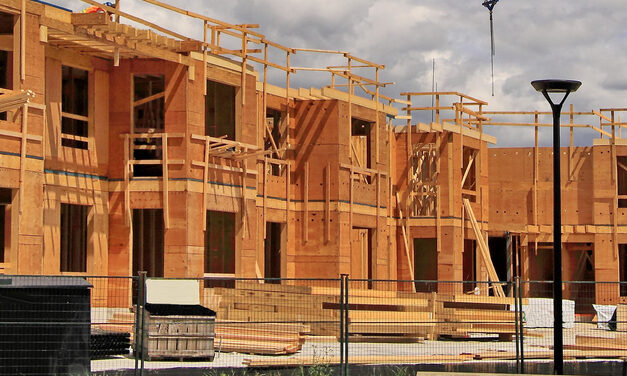Executive summary:
The House of Commons recently passed Bill C-78, the Tax Break for All Canadians Act, which proposes a temporary GST/HST holiday on certain items. This initiative, pending Senate approval, aims to provide significant tax relief to Canadians on a variety of goods during the eligible period, including children’s items, food and more. Read on to discover when the holiday will take effect, the eligible items, and key considerations for both consumers and businesses to maximize the tax break this season.
On Nov. 28, 2024, the House of Commons passed Bill C-78, titled the Tax Break for All Canadians Act, to temporarily relieve good and services tax/harmonized sales tax (GST/HST) on eligible supplies, such as children’s clothing, toys, games, books, food and beverages, made between Dec. 14, 2024 to Feb. 15, 2025 (eligible period). Note that the legislation is still in draft and pending Senate approval.
The tax relief provides that the eligible supplies will be considered zero-rated, which means that they will carry an applicable GST/HST rate of 0%. This is positive news for GST/HST registered businesses, as the GST/HST holiday will not affect their eligibility to claim input tax credits of GST/HST paid on expenses related to providing the eligible supplies.
Eligible supplies
Items eligible for the temporary zero-rating include:
- Most food and beverages for human consumption which would otherwise be taxable, such as snack items and other prepared foods, catering services (where performed and paid for during the eligible period), and beverages including beer, wine, sake and other low alcohol packaged beverages. However, food or beverages sold from a vending machine and spirits or other hard alcohol are excluded from the temporary zero-rating.
- Children’s toys and games if they are intended for children under 14 years old for learning or play. Most toys that are marketed as being for an age below 14 (for example, a toy recommended for children ages eight and up) would qualify.
- Children’s clothing, footwear, diapers and car seats
- Jigsaw puzzles for all ages
- Video game consoles, controllers and physical video games provided in a read-only tangible format (i.e., game cartridges)
- Christmas and similar decorative trees, including natural trees and artificial trees
- Physical books and printed material. Key exclusions comprise of colouring books, calendars, magazines and downloadable audiobooks (except physical audio recordings of printed books if 90% or more of the recording is a spoken reading of a printed book).
The above items qualify for GST/HST relief during the eligible period whether they are being purchased retail (B2C) or wholesale (B2B). Eligible supplies imported into Canada during the eligible period also qualify for the temporary GST/HST relief.
Timing of eligible supplies
In order to avail the benefit of the temporary GST/HST zero-rating, the eligible supplies made during the eligible period should meet the following conditions:
- All consideration for an eligible supply must be paid within the eligible period.
- The property must be delivered or made available to the recipient during the eligible period. For these purposes, delivery is deemed to be complete on the date the supplier either transfers the property to a common carrier retained on behalf of the recipient or sends the item by mail/courier.
If a deposit was paid before the eligible period, the eligible item supplied during the eligible period will still qualify for this GST/HST relief, provided the entire balance is paid and the item is delivered during the eligible period.
Key considerations for businesses ahead of the GST/HST tax holiday
While the timing of eligible supplies and related payment conditions appear to be straightforward for point-of-sale retailers, GST/HST registered suppliers issuing invoices with payment terms (e.g., 30 days from issuance of invoices) must verify whether payment will be due and received by Feb. 16, 2024, prior to applying the zero-rating on their products. Affected businesses will need to adjust their billing rates in the system, review payment terms, and address other related details.
While the tax holiday brings exciting savings for consumers, businesses making the eligible supplies need to delve into these intricacies, especially with the implementation date approaching soon.
This article was written by Gautam Rishi and originally appeared on 2024-12-04. Reprinted with permission from RSM Canada LLP.
© 2024 RSM Canada LLP. All rights reserved. https://rsmcanada.com/insights/tax-alerts/2024/navigating-the-gst-hst-holiday-tax-break.html
RSM Canada LLP is a limited liability partnership that provides public accounting services and is the Canadian member firm of RSM International, a global network of independent assurance, tax and consulting firms. RSM Canada Consulting LP is a limited partnership that provides consulting services and is an affiliate of RSM US LLP, a member firm of RSM International. The member firms of RSM International collaborate to provide services to global clients but are separate and distinct legal entities that cannot obligate each other. Each member firm is responsible only for its own acts and omissions, and not those of any other party. Visit rsmcanada.com/about for more information regarding RSM Canada and RSM International.
The information contained herein is general in nature and based on authorities that are subject to change. RSM Canada LLP guarantees neither the accuracy nor completeness of any information and is not responsible for any errors or omissions, or for results obtained by others as a result of reliance upon such information. RSM Canada LLP assumes no obligation to inform the reader of any changes in tax laws or other factors that could affect information contained herein. This publication does not, and is not intended to, provide legal, tax or accounting advice, and readers should consult their tax advisors concerning the application of tax laws to their particular situations. This analysis is not tax advice and is not intended or written to be used, and cannot be used, for purposes of avoiding tax penalties that may be imposed on any taxpayer.









